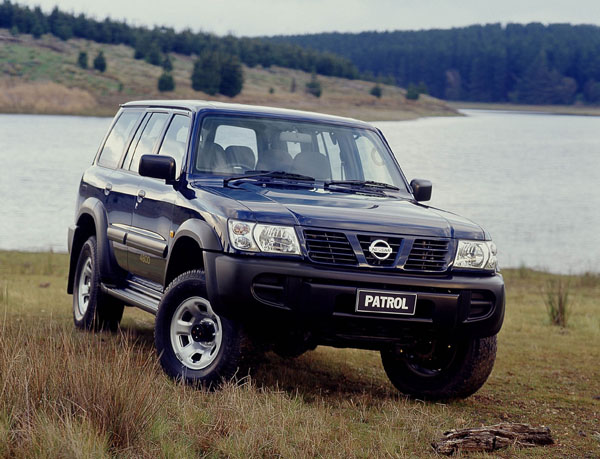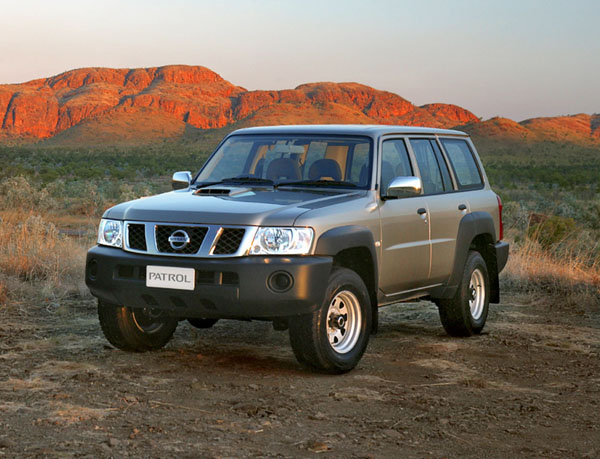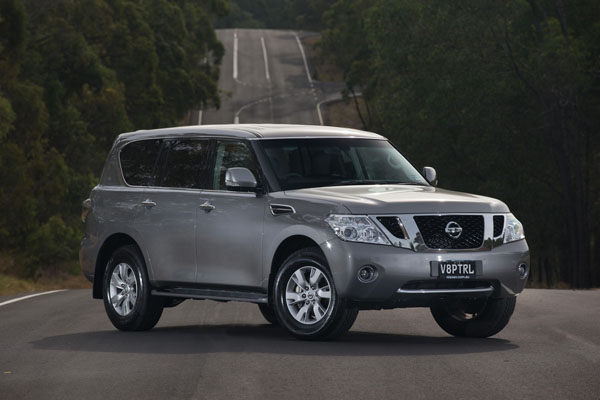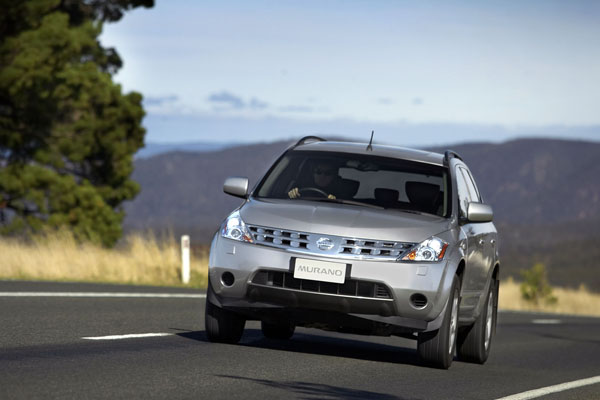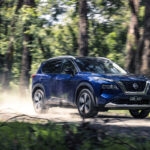Nissan Patrol is the real deal. It’s a 4WD not an SUV, with truck-type body-on-chassis construction for maximum strength in harsh driving conditions, particularly in real off-road conditions.
The drawback of a ladder-frame is a lack of refinement and comfort compared to the typical SUVs of the modern era. Though Patrol has been improved over the years, it’s still on the crude side and may not suit those who are looking for a macho people mover rather than a genuine bush-going wagon.
Patrol has been a solid seller in the Australian bush for many years, though it has to be said Toyota LandCruisers dominate this market segment. It’s a favourite with those doing heavy-duty towing, large caravans, horse floats and big boats.
The big Nissan did well enough in its early iterations, but really came to the fore with the launch of the fourth generation, the GQ series, in 1987. This ran for 10 years before the introduction of the GU in 1997.
The Nissan GU Patrol in October 2004 saw virtually every panel changed, yet you had to look twice to see that there were differences in the vehicle. It’s title is GU Series 4.Inside, the dash and instrument panel were thoroughly modernised in design. At the same time, the in-cabin materials were lifted to a higher quality to give a more upmarket feel.
Though there have been major changes since then, the tag GU continues. The latest models are sold in a smaller variety of models than in Patrol’s heyday. That’s due to the introduction of an all-new model called the Y62 Patrol in February 2013. As the Y62 is only built with a petrol engine the older GU continues to be imported as a diesel, now listed as GU Series 9.
Interior room in the big Nissan G Series models is less than it should be considering its external size.
Patrol Y62 is aimed at the American market and is a giant 4WD that can swallow families and lots of their stuff without even looking that it’s struggling.
Most Patrols are long-wheelbase four-door station wagons, they frequently come with additional seats in the rear to let them carry up to seven occupants. When all seven seats are in use the luggage area is fairly restricted but with the seats folded out of the way the boot is large and pretty well shaped.
Patrol is also sold as a cab-chassis to which a big variety of bodies have been fitted over the years. The Patrol Coil-Cab, launched in 1997, is an interesting semi-commercial variant, being aimed at the recreational ute market. It doesn’t have the same carrying capacity as the other cab-chassis but its ride and refinement are better than that of the standard commercials, though still nothing to write home about.
Most GQ Patrols used a 4.2-litre petrol or diesel six, or a 2.8- or 3.0-litre turbo-diesel, also in straight-six configuration.
in 1990 a 3.0-litre petrol engine, similar to the one used in the Nissan Skyline/Holden Commodore at the time, was an option list. It doesn’t have the grunt of the big engines, but uses less fuel and so is quite popular.
With the launch of the GU Patrol the petrol six went up in capacity to 4.5 litres. That in turn was replaced by a virtually all-new 4.8-litre petrol V8 in October 2001. The 4.8 is cleaner and more economical than the 4.5 due to significant design improvements.
The four-cylinder turbo-diesel in the early GU Patrol was the 2.8-litre unit, but in April 1999 a new-design 3.0-litre turbo-diesel was introduced. The 3.0-litre is a much better unit.
The petrol V8 in the Y62 Patrol displaces 5.6 litres and is a modern design. However, it’s hauling a large vehicle and is still not exactly an economy unit.
Most older Patrols have a five-speed manual gearbox, but four-speed automatics became increasingly popular over the years. The Y62 auto leaps way ahead of the GU, featuring no fewer than seven forward speeds.
The manuals are heavy and truck-like in their movements but work well and seem to last forever when driven correctly.
Nissan Patrols are easy to work on, with large areas of underbonnet and under-vehicle space. Servicing and spare parts costs are generally reasonable and the dealer network is well represented in all areas of Australia.
Insurance costs are usually relatively low but there can be a fair variation so it pays to shop around. Make sure you do a fair comparison from company to company.
Ford Mavericks are old Nissan Patrols, being identical apart from badges and for some minor changes in equipment levels. They were only sold from 1988 until 1993 and were never particularly popular. Spare parts are the same as those for the Patrol but may be getting scarce.
WHAT TO LOOK FOR
Wandering from the straight ahead when driving on a sealed road possibly means suspension problems. It can also be caused by incorrect tyre pressures so check these before the test drive, ideally when the tyres are cold.
Rust isn’t usually a problem unless a Patrol has been used in surf at a beach. Check the chassis and the lower areas of the body and doors.
Look for underbody damage – the door sills and bumpers are usually the first to suffer. Look also for dings in the bash plates and be sure they haven’t been pushed onto the items they should be protecting.
Check the paint for scratching caused by being pushed through narrow bush tracks.
Turbo-diesels without service books, or a book that shows oil changes have been haven’t been carried out according to schedule may have problems looming.
Listen for a whining sound from the turbo and look for black smoke from the exhaust under acceleration.
Listen for noises from a manual gearbox during normal running and for crunching from weak synchromesh, particularly on fast three-two downchanges.
An old Nissan Patrol GQ automatic may have a vibration in the tailshaft due to it being out of balance.
Some old Patrols may have cracks in the spring mountings. Listen for squeaks or rattles from the front end when test driving.
CAR BUYING TIP
Big 4WDs that have done a lot of off-road work will wear out before those living a pampered suburban life. However, workhorses driven well and maintained correctly will last for many years.




